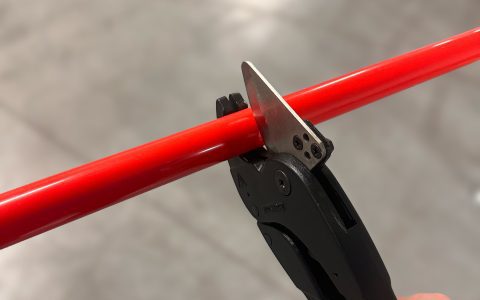Cutting Screws Effectively
Properly cutting screws ensures they fit specific applications without compromising their integrity. The chosen method and tool depend on the screw's size, material, and the required precision of the cut.
Common Cutting Tools & Techniques
- Hacksaw: A versatile tool for most screw types and sizes.
- Use a blade with fine teeth (e.g., 24-32 TPI - Teeth Per Inch).
- Technique: To protect threads and ensure a cleaner cut, thread one or two nuts onto the screw, positioning them just beyond the intended cut line. Tighten these nuts against each other to lock them. Clamp the nuts (or the screw head, if more appropriate) securely in a vise. Make the cut with steady, even strokes, keeping the saw perpendicular to the screw. After cutting, unscrewing the nuts over the cut end helps to clean and reform the initial threads.
- Bolt Cutters: Suitable for larger diameter or softer material screws where thread deformation is less critical. They provide a quick cut but may pinch or damage threads at the cut point.
- Wire Strippers/Crimpers with Integrated Screw Cutters: Many electrical tools feature dedicated, threaded holes for shearing common small machine screws (e.g., 4-40, 6-32, 8-32, 10-24, 10-32).
- Technique: Thread the screw into the correctly sized hole to the desired length and firmly close the tool handles. This method typically provides a clean cut that preserves the threads up to the point of the cut.
- Rotary Tool with Abrasive Cut-off Wheel: Offers precision for various screw sizes and hardened materials. It can produce a clean cut but generates heat and more significant burrs.
Post-Cut Finishing is Crucial
Regardless of the cutting method, finishing the cut end is essential for functionality:
- Deburring: The cut end will invariably have sharp edges or burrs. Carefully remove these using a fine metal file. A slight chamfer or bevel on the leading edge of the screw will make it easier to start into a threaded hole.
- Thread Chasing/Restoration: If nuts were used during hacksawing, their removal helps restore the lead thread. For critical applications or if threads are noticeably damaged, use a threading die of the correct size and pitch to chase (clean and reform) the threads at the cut end.
Safety Precautions
- Always wear safety glasses to protect your eyes from flying metal particles or tool fragments.
- Secure the workpiece: Ensure the screw is firmly clamped to prevent movement during cutting, which can lead to inaccurate cuts or injury.
- Handle with care: Freshly cut screw ends can be extremely sharp. Use gloves if necessary.










